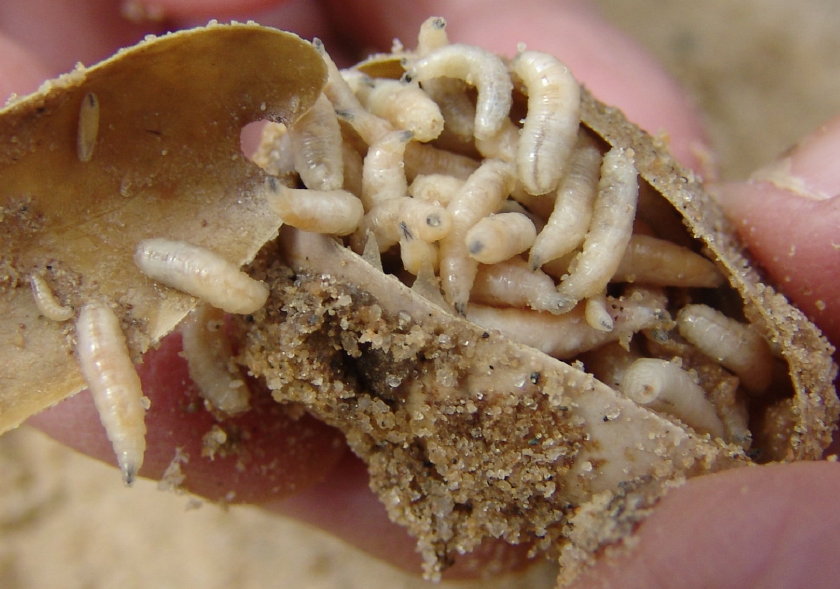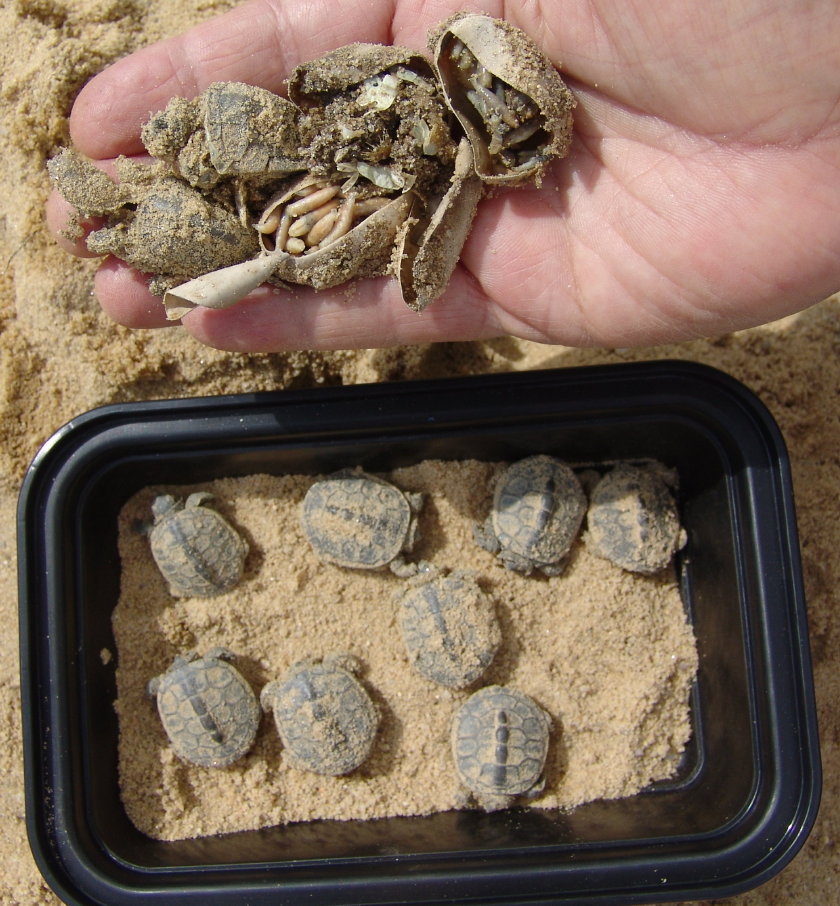As we described earlier in the post, “Rescuing Live Hatchlings from Maggot Infested Nests,” fly maggots devastate threatened diamondback terrapin nests on the Outer Cape. They devour tiny, vulnerable hatchlings as they break their eggshells in the secret darkness of their hidden underground nests. When we encounter a nest infested with maggots, and after we suppress our disgust and repulsion, we aggressively excavate the egg chamber in order to save as many hatchlings as we can.
Terrapin Egg Completely Consumed by Fly Maggots
This Thursday we checked on a nest laid late last June in a new turtle garden off Broadmarsh River in Wareham, 60 miles from nests on the Outer Cape and on the other side of the Cape Cod Canal. Still, once we penetrated the egg chamber the sand resembled an Indiana Jones movie scene with maggots playing the role of snakes. “Maggots,” exclaims the Turtle Guy. “Why does it have to be maggots?”
Maggots in Motion
We ignore the stench and dig quickly through the slithering sand to rescue eight live hatchlings among the devoured remains of eggs and embryos of seven might-have-been siblings.Â
Eight Saved, Seven Depredated by Maggots
The rescued hatchlings appeared lethargic as though traumatized by the experience. But after an overnight stay in clean, moist soil, and a leisurely bath in warm fresh water, they were eager for release into the wild. That is, turtle eager which isn’t quite the same thing as mammal eager.
Hatchling Strolls through Wareham Turtle Garden
The background of the previous video clip shows the exquisite nesting habitat that was created by private homeowners abutting the nursery salt marsh of Wareham’s Broadmarsh River off Buzzards Bay. At their own initiative and their own expense, the homeowners petitioned the Town of Wareham Conservation Commission for permission to create a perfect nesting habitat along a beach front that had become sand starved over the years and had lost all upland nesting potential. These generous homeowners ordered 20 tons of perfectly matched beach sand to make a large nesting site at least 10 inches deep for terrapins to place their clutches. Within a couple of weeks of completing this turtle garden, the first female terrapin had scratched and dug her nest. In total, six nests were deposited in the new sandy turtle garden … all of which were protected by predator excluders. As these new babies mature, they too will return to this turtle garden, ensuring a whole new generation of diamondback terrapins in Broadmarsh River; all thanks to an exceptional family who are dedicated to restoring the Wareham coastal ecosystem for future generations.




